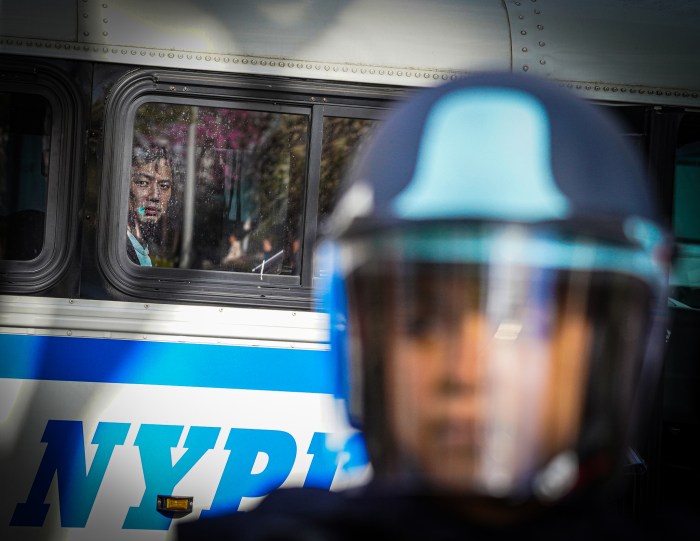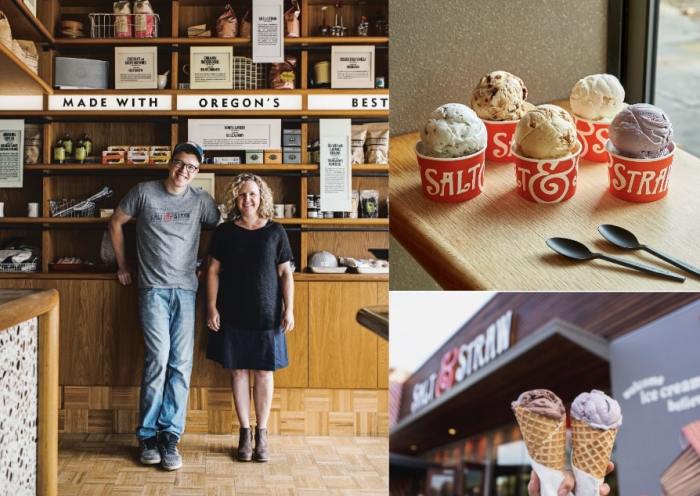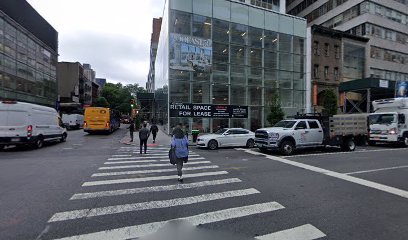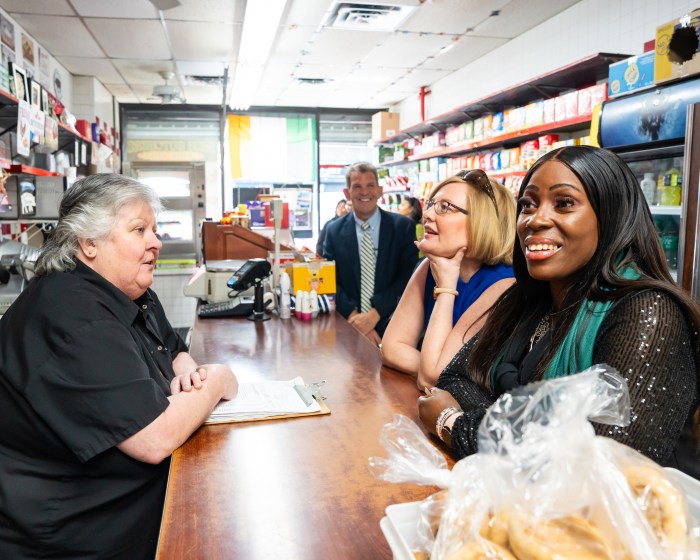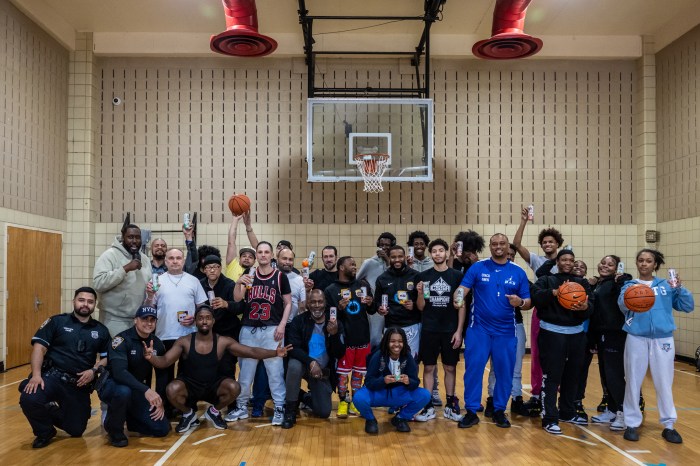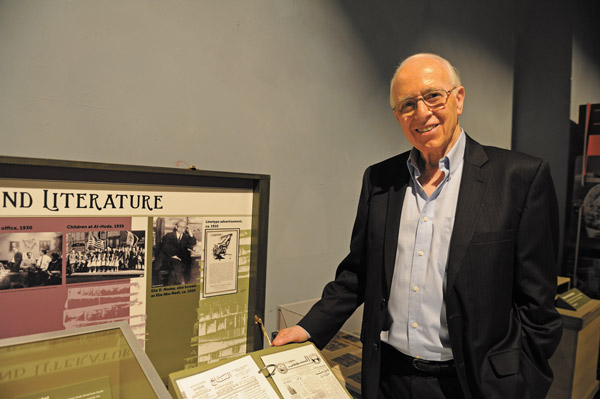
Dr. Robert Madey, 80, a retired physicist, standing next to a photograph of his father, the renowned poet and journalist, Elia Abu Madi, at an exhibit about “Little Syria,” the former Lower Manhattan neighborhood, which stretched up Washington St.
BY TERESE LOEB KREUZER | If there were ghosts on Washington St. in Lower Manhattan, they would probably be speaking Arabic and would recognize little of the neighborhood where they once lived and worked.
The cluster of tenements, shops, restaurants, churches and businesses once known as “Little Syria” because so many people from Syria and Lebanon settled there in the late 19th and early 20th centuries, extended from the Battery to Liberty St. Now, only three buildings on Washington St. remain — a tenement, a community center and landmarked St. George’s Syrian Catholic Church, which long ago was converted into a restaurant.
With photographs, music, a film and a few artifacts, a modest exhibit called “Little Syria, NY” at 3-Legged Dog Art & Technology, on 80 Greenwich St., recalls the old neighborhood. The exhibit was organized by the Arab American National Museum of Dearborn, Michigan and includes lectures and walking tours. It will be on display through May 27.
In the 1940s, when Robert Moses decided to build the Brooklyn Battery Tunnel, the city seized much of this area through eminent domain. The construction of the World Trade Center in the 1960s demolished what was left of “Little Syria.”
Dr. Robert Madey, 80, a retired physicist, remembers the distinguished cultural life of “Little Syria.” His father, Elia Abu Madi (in the Arabic spelling) was a renowned poet and journalist who emigrated from Lebanon in 1916.
“He had an office on Washington St. where he published his daily newspaper — ‘Al-Samir,’” Madey remembers. “He subsequently moved to Atlantic Avenue in Downtown Brooklyn, where he published the paper until his death in 1957.”
“Al-Samir” was one of several newspapers published in the Washington St. area.
“A group of poets and journalists established The Pen League in 1920 to preserve the Arabic language in their new country,” Madey said. “There were around 18 members. Kahlil Gibran [poet, artist and writer] was the most prominent. The others were journalists.”
A photograph of some of the members of The Pen League is in the exhibit as are photos of Madey’s father and copies of his newspaper.
Madey said that many of the immigrants from Syria and Lebanon came to the United States to escape from the Ottoman Empire, which then ruled the area. “The majority of the immigrants in the time frame of this exhibit were Christian,” he said. “The Muslim wave didn’t come until maybe the late 1960s.
“The immigrants loved this country very, very much,” he said. “They felt that this was their country though they wanted to preserve their culture.”
Madey remembers the Atlantic Avenue of his youth, “the stores and the proprietors and the businesses that they had. Many of them came from Washington St. and just moved over to Brooklyn.”
The smell of exotic spices wafting from open sacks and barrels no longer lingers on Washington St., but visitors to the exhibit at 3-Legged Dog can lift the lid of a box containing za’atar — a blend of oregano, thyme and savory — for a whiff of the past and can hear the music that once resounded in this neighborhood and if they want more, they can go to Atlantic Avenue where (among other Arab businesses) famed Sahadi’s, a grocery store established on Washington St. in 1898, still flourishes.
Exhibit Info
The exhibit, “Little Syria, NY,” is open daily from 10 a.m, – 6 p.m. at 3-Legged Dog Art & Technology Center, 80 Greenwich St. Free. Through May 27.
On Sat., May 18 at 10 a.m., Mary Ann Haick DiNapoli of Friends of the Lower West Side will be leading a 90-minute walking tour called “From Little Syria to Brooklyn’s Atlantic Avenue” leaving from the northwest corner of Court and Remsen Sts., Brooklyn (suggested donation, $20 a person).
On Tuesdays and Thursdays, May 16, 21 and 23 at 1 p.m., lunch hour walking tours beginning and ending at 3LD Art & Technology Center, will explore “Downtown’s Lost Neighborhood” (suggested donation, $10 a person).
On May 15, Poets House, 10 River Terrace in Battery Park City, will present a free program called “Journey in Words — The Poetry and Prose of Arab New York” at 6:30 p.m.
Also free, Dr. Akram Khater, professor of history at North Carolina State University, will lecture on May 20 at 6:30 p.m. on “Little Syria: History to Advocacy.” The lecture, discussing the history of Syrian/Levantine immigration, takes place at The Graduate Center, City University of New York, 365 Fifth Ave., Room 9204/05.










